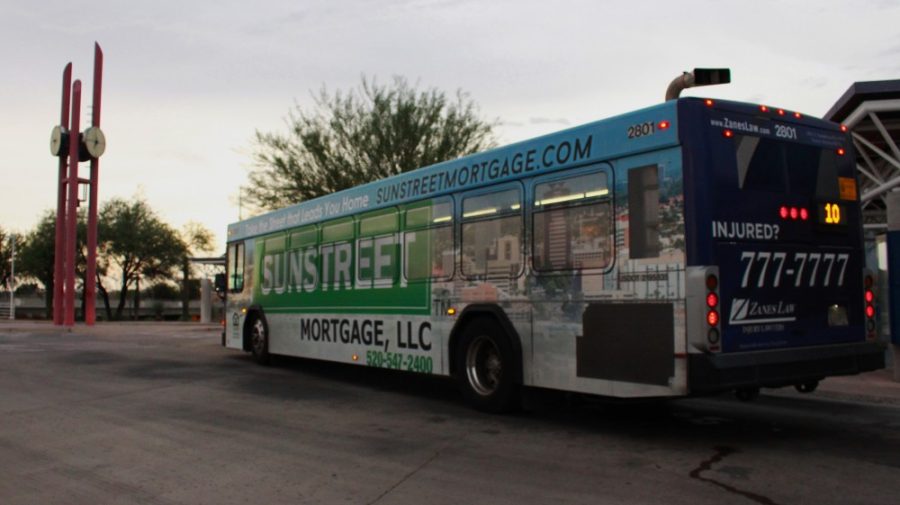The City of Tucson is currently in the middle of developing the first segment of its Bus Rapid Transit project, one that will connect the Tohono Tadai Transit Center and Tucson Mall to the Ronstadt Transit Center and Downtown Tucson. The city’s first step is the north segment, a five-mile portion of the planned 15-mile transit corridor.
During this project’s development, Tucson Rapid Transit has been engaging in public outreach to gauge the community’s preferences. In late 2023, based in large part on community survey responses, Stone Avenue was chosen for the north segment.
According to TRT, Bus Rapid Transit is a “high-capacity bus service that improves travel speed and reliability, passenger capacity, and the rider experience.”
The hope is to bring Tucson transportation into the future of sustainability and connect the different parts of the city, said Kristin McRay, community infrastructure manager for Ward 1.
“The idea of a Bus Rapid Transit system in the city will be to create a higher-capacity transit system that has a lot more mobility, in a sense, [and] flexibility than a rail system would have,” McRay said.
This form of public transportation differs from traditional bus systems.
“[The BRT] has dedicated lanes, so it wouldn’t be sharing a lane with vehicles,” said Ian Sansom, project manager of Transit-oriented Development at the City of Tucson Department of Transportation and Mobility. “It has signal prioritizations […]. When a bus rolls up to a traffic signal, it can trigger the red light to turn to green and so you can have quicker movement across the corridor in those bus lanes.”
Traditional buses can carry 40 passengers, while BRT can carry 100-150 passengers, Sansom said. It also can run every 10 minutes or less during peak periods.
When considering these differences, BRT is a rapid and cost-effective service for regional mobility, Sansom said. The total estimated timeline for the project is 3-7 years before service is implemented on the ground.
The reliability of a public transit service also depends on how supportable it is for the Tucson area.
“When we have to be thinking about sustainability, we have to be thinking about the cost of construction and how long it takes for the project to really come online,” McRay said. “There are tons of benefits to doing a Bus Rapid Transit system over an in-ground rail system. Just sort of the number of miles that you can lay for the same cost, to be able to more quickly meet the needs of the community.”
The design and construction of the five-mile segment has an estimated total cost of $140 million, but if the project succeeds in getting a federal grant, that cost would be halved, Sansom said.
Efficient transit connectivity in a community can be impactful in various ways.
According to Kevin Dahl, city council member for Ward 3, Stone Avenue has less existing development along it, so there’s more potential for future transit-oriented development.
Stone Avenue is also a part of the 85705 zip code. This area has been identified as an underserved area by the city, according to Dahl.
“Many of the neighborhoods are low income, struggling, vulnerable neighborhoods and bringing in [a] transit route into that sort of neighborhood will be a boon for the community,” Dahl said.
Since Downtown Tucson and the Tucson Mall are focal points for jobs, this transit corridor would connect a lot of people to job opportunities.
The project’s study of the transit corridor — within three-quarters of a mile on either side — reported that more than 50% of jobs are focused in this area, according to Sansom.
“Where there’s good transit, economic commerce and more housing follows,” Dahl said. “Businesses have a whole new customer base. And many employees, whether they have cars or not, often find transit commuting easier or better.”
Economic development naturally occurs along transit routes. Regardless of whether it’s an apartment, office building or another commercial enterprise, the incentives of transit will be beneficial to the community, according to Dahl.
“When we’re talking about potentially bringing in growth around transit, there’s a lot of opportunities to do that with new housing, new retail [and] new mixed-use development on Stone Avenue, while still protecting the kind of special local and legacy businesses that have been there for a long time,” Sansom said.
Besides local businesses, students in the community can also utilize this type of transportation service.
According to McRay, this route opens up possibilities for students who rely on public transportation to find housing and employment outside of major school areas.
Along with providing transit to and from schools, such as Pima Community College or the University of Arizona, this corridor provides recreational use.
“For UA students, they could connect from the streetcar Ronstadt and then take BRT up to Tucson Mall if they wanted to do shopping,” Sansom said. “And also connections for PCC to get downtown. Which, currently, there’s not as good a bus service from PCC to downtown.”
In 2023, Tucson’s mayor and city council voted to keep transit fares free. The council intends to keep transit ridership free “until there’s an affirmative vote to reinstitute those fares.”
The fare structure of the BRT system would depend on whether the fare-free policy is still in place, Sansom said.
For the next round of outreach, Tucson Rapid Transit will look at station locations for Stone Avenue.
The upcoming south segment will connect Downtown Tucson and the Ronstadt Transit Center to the Tucson International Airport. Updates and upcoming events concerning the project will be posted on the project’s website.
Follow the Daily Wildcat on Instagram and Twitter/X









